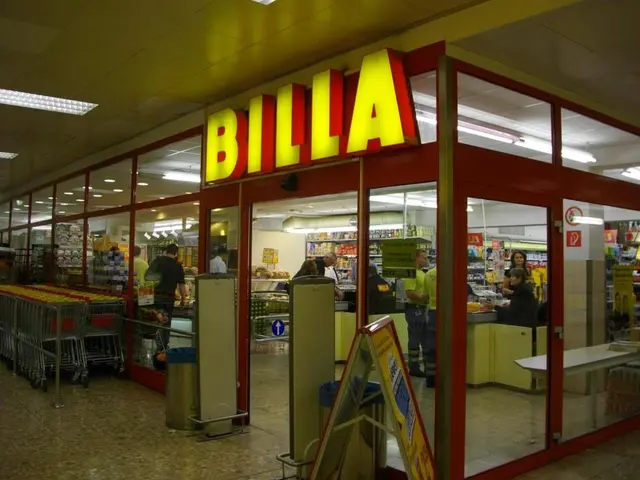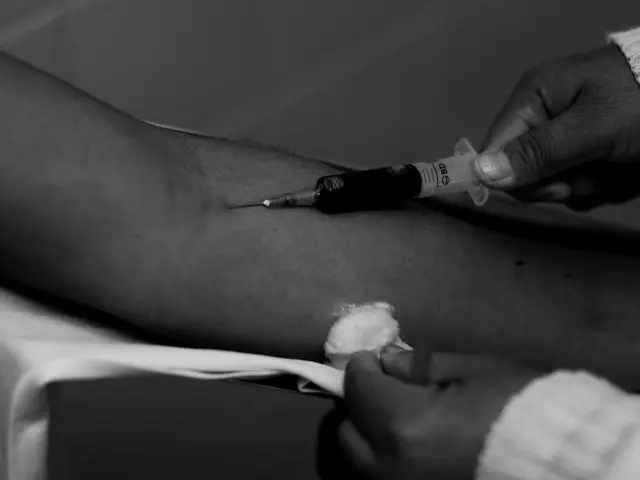Scissorswiden their gap - "Saxony's healthcare system is struggling" - Tension mounts for healthcare facilities in Saxony
Food banks in the German state of Saxony are currently experiencing a surge in demand, putting a strain on their resources and finances. This situation aligns with broader inflationary pressures on food prices in Germany, including Saxony, where the cost of living has become increasingly difficult for many families[4][5].
The increase in demand for food assistance has placed food banks under financial strain as their operating costs increase due to higher food prices[5]. However, specific recent data on the decrease in donations to food banks in Saxony is scarce in the search results. The general indication is that increased demand strains food support services, commonly leading to a greater need for donations and funding, while many food banks report difficulties maintaining adequate financial support[4].
Regional initiatives in Saxony and surrounding areas highlight social and economic challenges but do not explicitly quantify donation trends to food banks[4]. In broader community food assistance contexts (such as the UK), rising demand correlates with urgent appeals for donations, suggesting a similar scenario might apply in Saxony albeit without explicit data here[1].
Green politician Christin Melcher stated that especially in times of sharply rising prices, food banks are an important anchor for many people. To address this issue, the state of Saxony initially planned to allocate around 40,000 euros for food banks this year, but after criticism, 400,000 euros are now available for this and next year each[6]. The funds are meant to optimize processes, which will benefit food bank users. The state chairman, Stephan Trutschler, has stated that the gap between demand and donations is widening[7].
The Social Ministry does not plan to support increased energy costs for food banks. However, the funds are intended for investments such as refrigerated vehicles, but Trutschler would like to have at least some flexibility with a portion of the funds[8]. Approximately 900 volunteers help with collecting, sorting, and distributing food in Saxony[9]. Last year, Saxon food banks recorded around 900,000 pick-ups at approximately 200 distribution points[10].
Increasing fuel and electricity prices are causing problems for food banks, with discounts sometimes skyrocketing. Occasionally, food banks receive pallets of food items (such as yogurt, baked goods, or vegan burger patties) that have been incorrectly labeled with an expiration date[11]. On average, a pallet of food donated to food banks in Saxony is worth 400-600 euros, but is currently given for about 75 euros[12]. The state association suggests that there is increasing cost pressure on retailers due to discounted prices and AI-assisted inventory management systems.
Social Minister Petra Köpping emphasized the importance of food banks and their commitment to people and families affected by poverty. Food bank customers include seniors, single parents, and refugees[13]. The situation underscores the critical role that food banks play in supporting vulnerable communities during difficult economic times.
For a detailed financial overview of funding and donations at food banks in Saxony, consulting direct reports from local authorities or food bank organizations would be necessary, as the current search results provide indicative but not comprehensive data. If you want, I can help suggest how to find official local reports or contact relevant Saxony-based food bank networks for updated information.
Read also:
- Impact of Alcohol Consumption During Pregnancy: Consequences and Further Details
- The cause behind increased urination after alcohol consumption is explained here.
- West Nile Virus found in Kentucky for the first time; residents advised to take protective measures
- Symptoms, Timeframe, and Recovery from Cocaine Detoxification







